Have you heard of Zen Match-like games before? Zen Match-like games uniquely blend relaxation and strategy, offering players a peaceful escape through simple yet engaging tile-matching mechanics. These games combine calming aesthetics with challenging puzzles, creating a perfect balance of mindfulness and entertainment. Whether unwinding after a long day or seeking a mental challenge, Zen Match-like games provide a soothing experience that captivates and refreshes the mind. In this article, we’ll tell you everything about these games and mesmerize you with this amazing genre!

Key Features
Zen Match-like games have carved out a niche by offering a tranquil escape from the chaos of everyday life. Here are some of the key features that make these games so appealing:
- Relaxing atmosphere
The core of Zen Match-like games is their calming vibe. These games are designed to be a sanctuary of peace, providing players with a soothing experience that allows them to unwind. The gameplay is usually slow-paced, with no rush or pressure, making it perfect for those moments when you need to de-stress and take a mental break.
- Soft color palettes and minimalistic design
A big part of what makes these games so relaxing is their visual design. They often feature soft, muted color palettes that are easy on the eyes, avoiding harsh contrasts or overly bright colors. The minimalistic design complements this, stripping away unnecessary clutter and focusing on clean, simple visuals. This combination creates a visually peaceful environment, enhancing the overall calming effect.
- Customization
Customization is another standout feature of Zen Match-like games. Players often can change various aspects of the game, from backgrounds to tile designs. This allows for a more personalized experience, letting players tailor the game to their aesthetic preferences.
- Personalization Options
Beyond just customization, these games offer deeper personalization options. You can change themes, adjust the look and feel of the tiles, and even create a unique gaming experience that reflects your style. This level of personalization adds to the enjoyment, making each playthrough feel fresh and uniquely yours.

Similar Games to Zen Match
When life gets hectic, sometimes all you need is a game that offers a little slice of tranquility. Zen Match-like games are perfect for those moments, blending calming gameplay with soothing visuals and plenty of opportunities for personalization. Right now we’ll explore some of the best Zen Match-like games out there, each offering its unique take on relaxation and creativity. Whether you’re looking to unwind after a long day or just enjoy a peaceful gaming experience, these titles have got you covered.
Match Tile 3D
Match Tile 3D is a refreshing twist on the classic match-three puzzle genre, featuring three-dimensional gameplay where players rotate a 3D sphere to find and match pairs of tiles. With its visually appealing design, relaxing yet challenging levels, and customizable themes, the game offers an engaging and satisfying experience that’s perfect for both casual play and puzzle enthusiasts looking for something new.
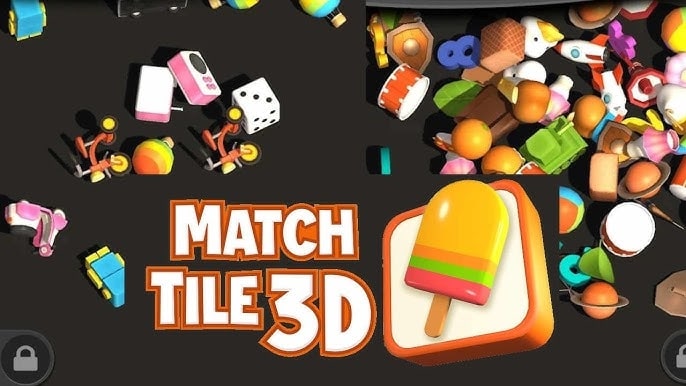
Gameplay
Match Tile 3D offers a unique and engaging gameplay experience by taking the familiar match-three concept and adding a three-dimensional twist. In the game, players are presented with a rotating 3D sphere filled with various tiles, each depicting different objects or symbols. The main objective is to find and match pairs of identical tiles until the sphere is cleared.
- Rotating the sphere: players can freely rotate the 3D sphere to view the tiles from different angles. This adds a layer of depth and strategy, as some tiles may be hidden behind others, requiring careful observation and spatial thinking.
- Matching tiles: to clear the sphere, players must identify and tap on matching pairs of tiles. As pairs are matched, they disappear, gradually revealing more tiles and making it easier to find subsequent pairs.
- Timed challenges: some levels introduce timed challenges, adding a sense of urgency to the gameplay. Players need to complete the puzzle within a set time limit, which increases the game’s intensity while maintaining its relaxing vibe.
Features
Match Tile 3D comes packed with features that set it apart in the puzzle genre. One of the standout features is its 3D puzzle mechanics. Instead of the traditional flat grid, players interact with a rotating 3D sphere filled with tiles, which they must navigate to find matching pairs.
The game also balances relaxation with challenge. While the soothing background music and minimalist interface create a calming atmosphere, the puzzles themselves gradually increase in difficulty, keeping players engaged without overwhelming them. The addition of timed challenges in certain levels adds an extra layer of excitement, making the game suitable for both casual players and those looking for a bit more intensity.
Visually, Match Tile 3D is stunning, with beautifully rendered tiles and a wide range of themes to keep the experience fresh. Players can customize their game by unlocking different tile designs and backgrounds, allowing for a personalized touch that enhances the overall enjoyment.


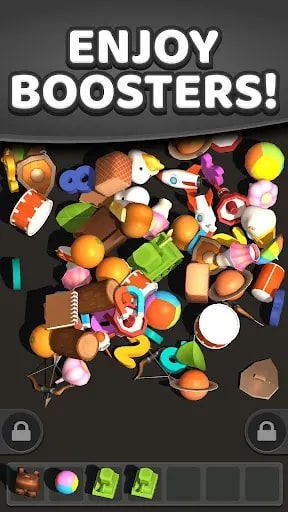
Art and Design
The art and design of Match Tile 3D are crucial to its appeal, offering a visually engaging and user-friendly experience.
- Vibrant 3D models with smooth animations: the game features highly detailed and colorful 3D models for each tile, making them visually striking. The smooth animations further enhance the gameplay, creating a fluid and immersive experience as you interact with the tiles.
- The rotating board adds a layer of depth and strategy: the rotating 3D board is a unique design feature that introduces a new dimension of strategy. By rotating the sphere, players can uncover hidden tiles and view the puzzle from different angles, adding depth to the traditional matching gameplay.
- Simple, clean interface for easy navigation: the game’s interface is designed to be straightforward and intuitive, with a minimalist approach that ensures players can easily navigate through menus and levels. This clean design keeps the focus on the gameplay and the vibrant 3D tiles.
Mahjong Solitaire
Mahjong Solitaire is a classic tile-matching game where players aim to clear the board by pairing identical tiles. Unlike traditional Mahjong, a four-player game, Mahjong Solitaire is a single-player experience focused on strategy and pattern recognition. The game features a variety of tile layouts, each requiring careful planning and observation to match and remove tiles successfully. It’s a relaxing yet challenging game, perfect for those who enjoy puzzles and a bit of mental exercise.
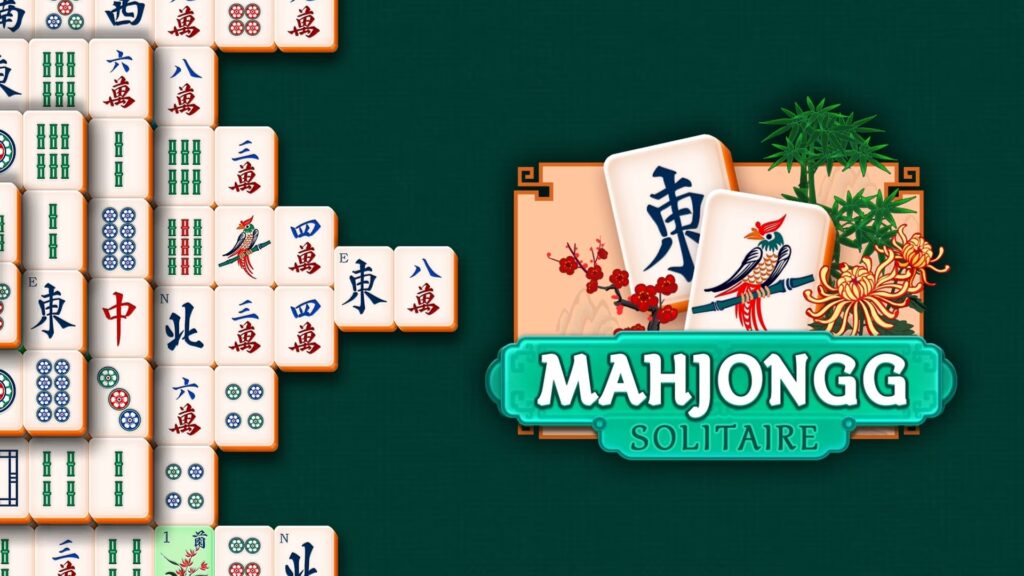
Gameplay
Mahjong Solitaire gameplay revolves around the strategic matching of tiles to clear the board. The game starts with a layout of tiles stacked in various patterns, and each tile features a unique symbol or character. The objective is to match identical tiles and remove them from the board. However, you can only match tiles that are “free”, meaning they have no other tiles blocking them from the left, right, or on top.
As you remove tiles, new ones become available, creating a dynamic puzzle that requires careful planning and foresight. The challenge lies in finding matches that don’t block your progress, as removing certain tiles too early can leave you with no available pairs, forcing a reset or undo.
The game offers a variety of layouts, each with different levels of difficulty, ensuring that players of all skill levels can find a suitable challenge.

Features
Mahjong Solitaire stands out for its simplicity and depth, offering a few key features that make it a beloved classic:
- Varied tile layouts
Mahjong Solitaire features a wide range of tile layouts, each offering a unique challenge. These layouts range from simple, beginner-friendly designs to complex arrangements that require careful strategy and planning.
- Strategic tile matching
The game’s core mechanic is matching pairs of identical tiles, but the strategy lies in choosing which tiles to match. Since only “free” tiles — those not blocked by other tiles — can be selected, players must plan their moves carefully to avoid getting stuck.
- Relaxing, solo gameplay
Unlike traditional Mahjong, a multiplayer game, Mahjong Solitaire is designed for solo play. This makes it a perfect choice for players looking for a relaxing, yet mentally stimulating, puzzle experience with an Asian aesthetic. The game’s calm atmosphere, combined with its strategic challenges, offers a satisfying way to unwind.
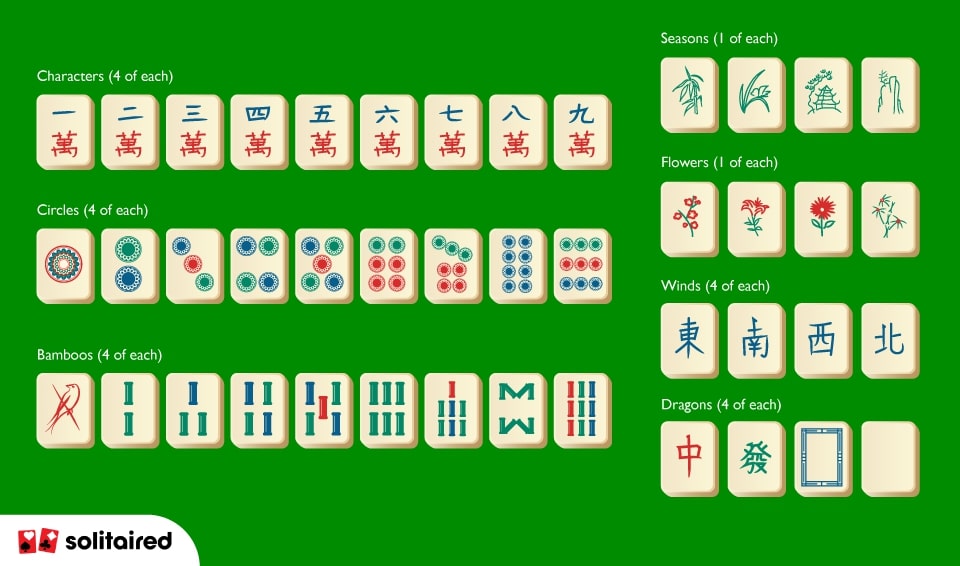
Art and Design
Mahjong Solitaire, a game steeped in tradition and cultural richness, showcases elegant tile designs that are often inspired by classical Chinese art. These tiles feature intricate symbols, such as bamboo, dragons, and characters, each meticulously crafted to evoke a sense of timeless beauty and connection to ancient traditions. The tiles are not only functional elements of the game but also serve as visual art pieces that bring a touch of elegance to the player’s experience.
The game is often set against backgrounds that depict serene landscapes or soothing patterns, adding to the overall tranquility of the gameplay. These backgrounds, whether they feature misty mountains, blossoming cherry trees, or subtle geometric designs, create an unforgettable environment that transports the player into a peaceful state of mind. The combination of these visually calming elements with the strategic nature of the game helps to create a harmonious balance between mental challenge and relaxation.
Accompanying the visual design is calming music that enhances the relaxing atmosphere of Mahjong Solitaire. The music, often composed of gentle melodies and soothing tones, complements the visual aesthetics, making each game session a meditative experience.
Tile Master
Tile Master is a mobile puzzle game where players match three identical tiles to clear them from the board. The goal is to clear all tiles on each level by strategically matching tiles without running out of space. As levels progress, the difficulty increases with more complex tile arrangements and limited moves.
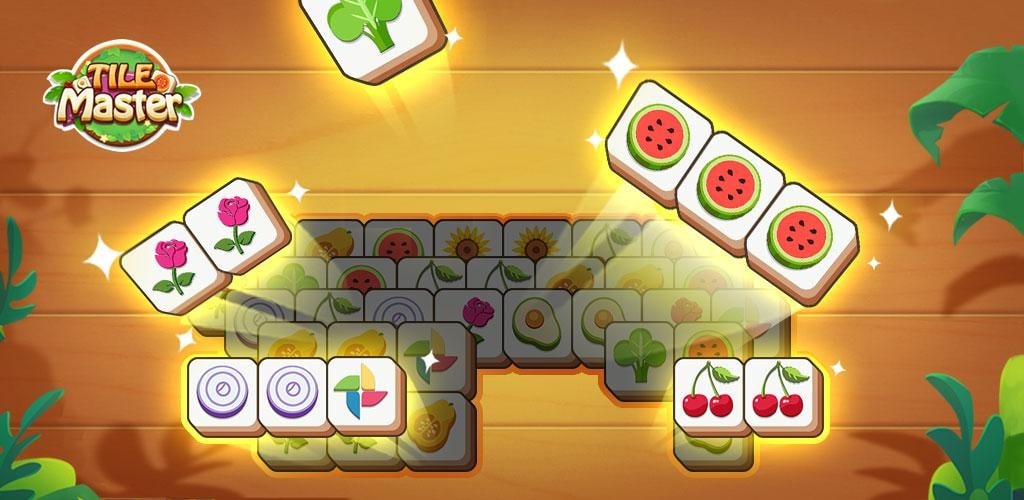
Gameplay
Tile Master is a tile-matching puzzle game where players aim to clear levels by strategically matching sets of three identical tiles. The game’s difficulty increases as players progress through various levels, requiring careful planning and quick thinking.
- Tile matching: the core gameplay mechanic involves selecting and matching three identical tiles to remove them from the board. As the levels progress, the layouts become more complex, requiring players to think ahead and make strategic moves to avoid getting stuck.
- Tile pool management: selected tiles are placed into a limited pool at the bottom of the screen. The pool can only hold a certain number of tiles; if it fills up without creating a match, the level fails. Players must carefully manage which tiles they select to avoid filling the pool prematurely.
- Power-ups and tools: as the game becomes more challenging, players have access to power-ups like Shuffle (which rearranges the tiles on the board), Undo (which allows players to reverse their last move), and Remove Tile (which eliminates a specific tile). These tools are limited and should be used strategically to help overcome difficult levels.
Features
Tile Master offers several main features that make it a captivating puzzle game. First, the game provides various levels, each with unique tile arrangements and increasing difficulty, which keeps the gameplay fresh and challenging as players progress. Second, the game includes power-ups and tools like Shuffle, Undo, and Remove Tile, which help players navigate difficult situations and strategically clear the board. Finally, the game’s visually appealing graphics and smooth animations enhance the overall gaming experience, making it both enjoyable and visually engaging for players.
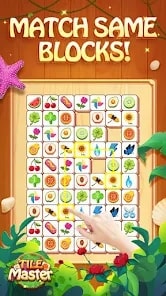
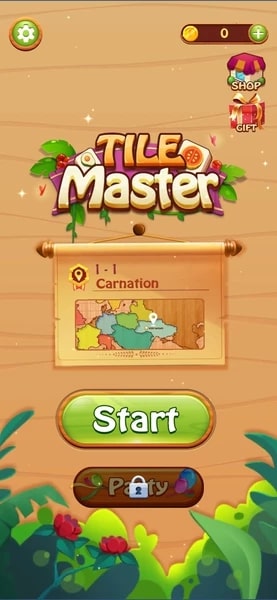

Art and Design
Tile Master features a visually appealing art and design style that enhances the gameplay experience. The game’s aesthetics are carefully crafted to be both engaging and relaxing for players.
- Colorful and detailed tiles
The tiles in Tile Master are vibrant and varied, featuring intricate designs and symbols. This variety not only makes the game visually interesting but also helps players distinguish between different tiles quickly.
- Clean and minimalist interface
The user interface is clean and minimalist, allowing players to focus on the puzzle without distractions. The design is intuitive, making it easy for players of all ages to navigate the game.
- Smooth animations
The game features smooth animations, especially when tiles are matched and removed from the board. These fluid animations add a sense of satisfaction and make the gameplay feel polished and refined.
Onnect – Pair Matching Puzzle
Onnect – Pair Matching Puzzle is a mobile game where players connect pairs of matching tiles to clear the board. The game challenges players to find and connect tiles with a limited number of moves, adding strategic elements to the puzzle-solving experience. As levels progress, the puzzles become more complex, with obstacles and varying tile layouts increasing the difficulty. The game is visually appealing, with smooth animations and a relaxing soundtrack, making it both engaging and enjoyable to play.
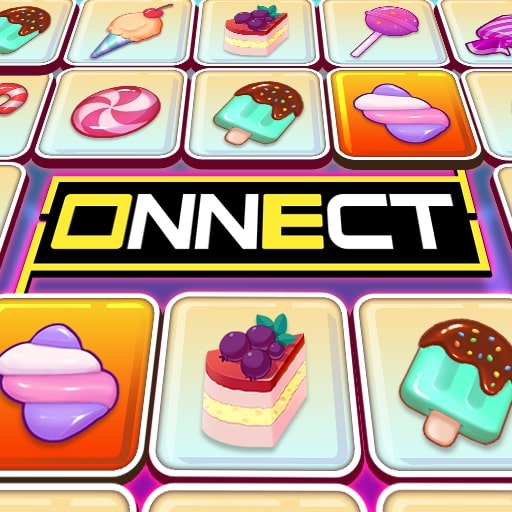
Gameplay
Onnect – Pair Matching Puzzle is a relaxing and engaging tile-matching game where players connect pairs of identical tiles to clear the board. The game becomes more challenging as levels progress, requiring strategic thinking and quick decision-making.
The first key gameplay mechanic is tile pairing, where players must find and connect matching tiles. These tiles must have a clear path between them, with no more than two 90-degree angles allowed in the connection. This mechanic challenges players to think ahead and plan their moves to avoid getting stuck.
Another important mechanic is obstacle navigation. As players advance through the game, new obstacles such as blockers or fixed tiles are introduced, making it harder to connect pairs. Players need to navigate around these obstacles to successfully clear the board, adding a layer of strategy to the game.
Lastly, the game features time and move limits. In certain levels, players are given a limited amount of time or a restricted number of moves to complete the puzzle. This mechanic increases the difficulty and requires players to be both quick and efficient in their tile pairing to succeed.
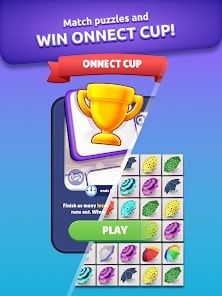
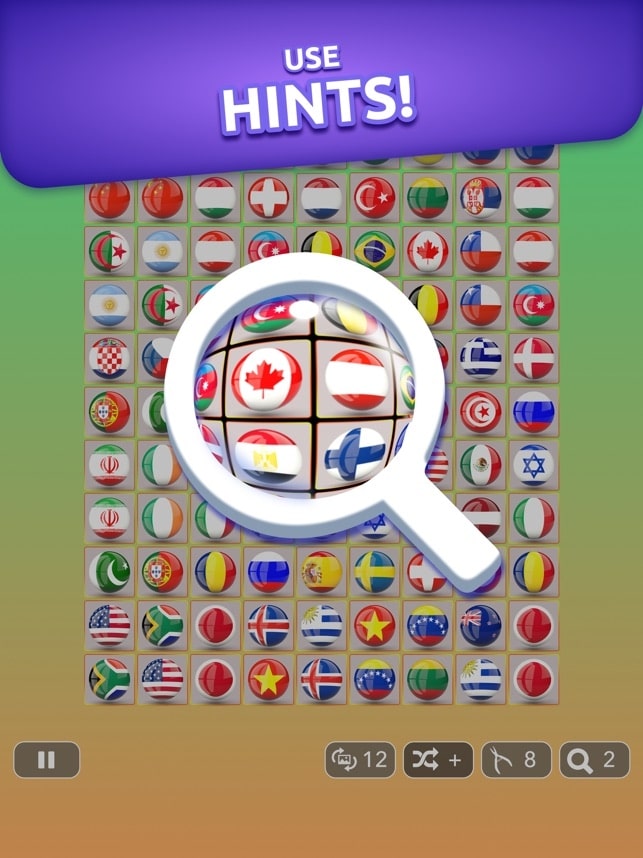
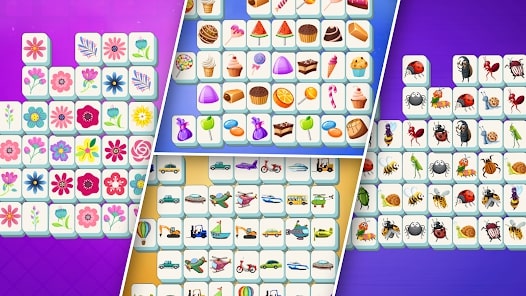
Features
Onnect – Pair Matching Puzzle offers several compelling features that make it a captivating tile-matching game. The game combines a variety of elements to provide a challenging and enjoyable experience.
- Diverse tile designs
Players encounter a wide range of colorful and uniquely designed tiles, which keeps the visual experience fresh and engaging throughout the game. Each tile set adds a new layer of complexity to the puzzles.
- Progressively challenging levels
As players advance, the game introduces increasingly difficult puzzles with more complex tile arrangements and additional obstacles. This gradual increase in difficulty helps maintain interest and provides a sense of accomplishment as players overcome tougher challenges.
- Soothing visuals and music
The calm and aesthetically pleasing graphics, along with relaxing background music, create a soothing atmosphere that enhances the overall gameplay experience. This feature helps players unwind while engaging in the puzzles.
Art and Design
Onnect – Pair Matching Puzzle is designed with a focus on creating a visually appealing experience. The art and design elements are crafted to enhance gameplay while providing a relaxing atmosphere.
One notable aspect of the game’s design is the varied tile artwork. The tiles feature a wide range of colorful and intricate patterns, which not only make the game visually stimulating but also aid in differentiating between various tile types, making the puzzles more engaging.
Another important design element is the clean and minimalist interface. The user interface is designed to be intuitive and uncluttered, allowing players to focus on solving the puzzles without distractions. This minimalist approach ensures that the game remains accessible and easy to navigate.
Additionally, smooth animations and transitions play a crucial role in the game’s visual appeal. The animations for tile matching and board clearing are fluid and visually satisfying, contributing to a pleasant and seamless gaming experience.

Tile Journey
Tile Journey is a tile-matching puzzle game where players connect and match tiles to progress through various levels. The game features colorful, themed tiles and increasingly complex puzzles. As players advance, they encounter new challenges and obstacles, making the gameplay more engaging and strategically demanding. The game combines relaxing visuals with challenging puzzles, providing a satisfying experience.
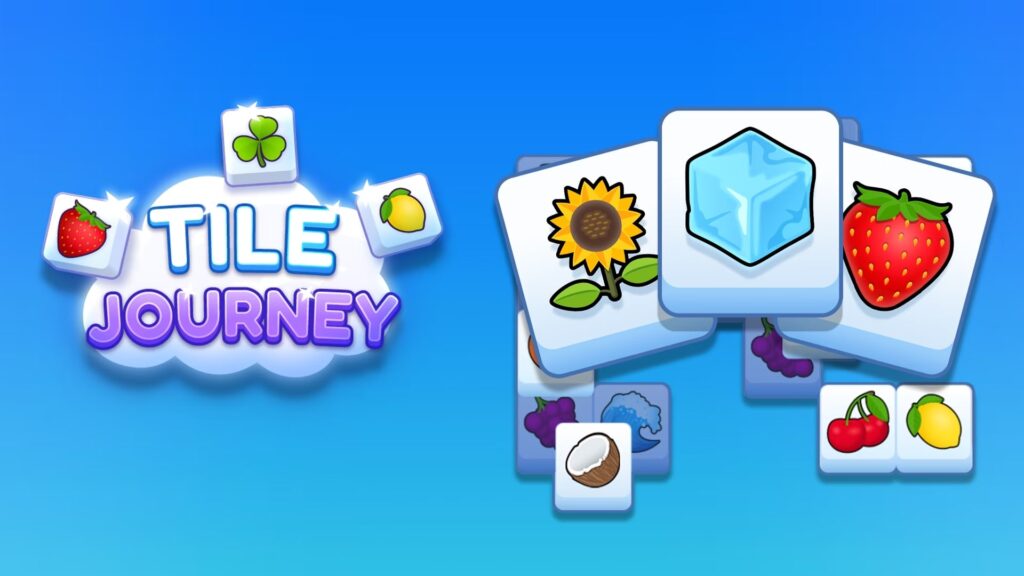
Gameplay
Tile Journey is a captivating puzzle-adventure game where players navigate through a variety of tile-based levels, each presenting unique challenges and puzzles.
- Tile shifting: players can move tiles to rearrange the layout of the level. This mechanic is essential for solving puzzles and creating paths through obstacles.
- Tile matching: some levels require players to match specific tile patterns or colors to progress. Successfully matching tiles can unlock new areas or provide bonuses.
- Dynamic obstacles: as players advance, they encounter obstacles that change based on the tile configuration. Adapting to these dynamic challenges is crucial for completing levels and advancing in the game.
Features
Tile Journey offers several compelling features that enhance its gameplay experience. One of the main features is its varied tile environments, which introduce different themes and obstacles in each level, keeping the gameplay fresh and engaging. Another key feature is the challenging puzzles, which require players to use their problem-solving skills and strategic thinking to progress through increasingly complex levels. Finally, progression rewards provide players with incentives for their achievements, such as unlocking new levels, acquiring special abilities, or customizing their game experience.



Art and Design
Tile Journey’s art and design are integral to its enjoyable gameplay experience. The game features a visually appealing and vibrant aesthetic that enhances the puzzle-solving adventure.
- Diverse tile art
Each tile in the game is uniquely designed, reflecting different themes and environments. This diversity helps create a rich visual experience and supports the thematic elements of each level.
- Detailed environments
The game boasts intricate background designs and environmental details that complement the tile-based puzzles. These designs contribute to the overall atmosphere and storytelling.
- Smooth animation
Tile Journey features fluid animations that bring the tiles and characters to life. This smoothness not only makes the game visually appealing but also enhances the gameplay experience by providing clear visual feedback.
Art and Design Features
Zen-match games are renowned for their serene and aesthetically pleasing art and design, which play a crucial role in creating a calming experience for players. These games often feature minimalist graphics, soothing color palettes, and harmonious design elements that emphasize relaxation and mindfulness. Right now, we’ll explore how the art and design of zen-match games contribute to their unique atmosphere and appeal, focusing on key visual and stylistic choices that enhance the overall gaming experience.
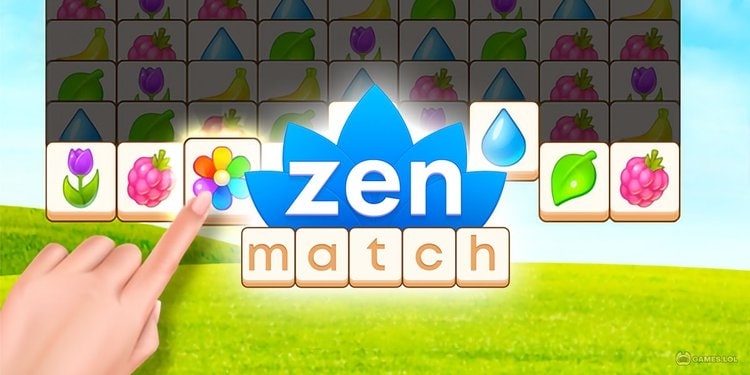
Visual Style
The visual style of zen-match games is characterized by its emphasis on tranquility and simplicity. These games often feature minimalist graphics, with clean lines and subtle textures that create a serene and uncluttered visual experience. Soft, pastel color palettes are commonly used to evoke a sense of calm and relaxation, while carefully chosen design elements contribute to a soothing atmosphere. The absence of harsh contrasts and the use of gentle gradients help maintain a harmonious aesthetic, making the visual style of zen-match games not only appealing but also conducive to the meditative and stress-relieving qualities these games aim to offer.
Color Palette
The color palette of zen-match games typically features soft and muted tones that promote relaxation and calm. These games often use pastel colors — such as gentle blues, greens, and pinks — that create a serene atmosphere and reduce visual stress. The colors are usually chosen to harmonize with each other, avoiding harsh contrasts and maintaining a cohesive and soothing look. This restrained use of color helps foster a tranquil gaming environment, allowing players to focus on the gameplay without being overwhelmed by intense or jarring hues.
Backgrounds
In zen-match games, backgrounds are designed to enhance the calming atmosphere and complement the game’s soothing aesthetic. These backgrounds often feature subtle and minimalist designs with gentle gradients or soft textures that provide a serene backdrop without distracting from the gameplay. Elements like abstract patterns, nature-inspired scenes, or simple geometric shapes are commonly used to create a peaceful environment. The backgrounds are typically muted in color, blending harmoniously with the game’s overall visual style, which helps maintain a consistent and relaxing mood throughout the gaming experience.
Creation Process for Zen Match-like Games
Creating zen-match games involves a meticulous process that balances aesthetic harmony with engaging gameplay. These games are designed to offer a calming and meditative experience, and their creation requires careful attention to visual design, user experience, and gameplay mechanics. We will try to delve into the creation process for zen-match-like games, exploring the key steps involved in crafting an immersive game environment.
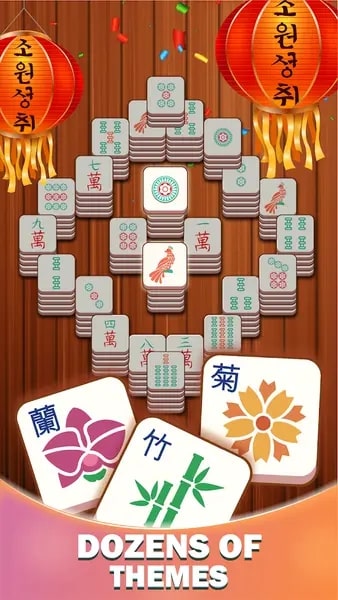
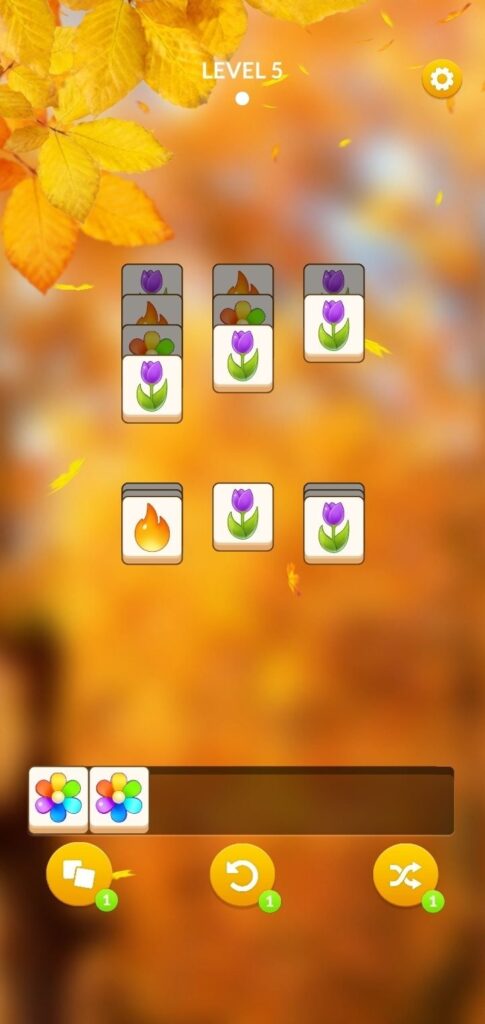
Game Design
An important step in the creation process for zen-match-like games is game design. This stage involves defining the core mechanics, objectives, and overall flow of the game to ensure it aligns with the serene and calming experience that these games aim to provide.
- Defining core mechanics
Designers outline simple, intuitive gameplay mechanics that align with the calming nature of the game. This includes creating easy-to-understand puzzles that provide relaxation rather than frustration.
- Balancing difficulty
The difficulty level is carefully tuned to ensure that puzzles are challenging yet not overwhelming. This balance is essential for maintaining a stress-free experience.
- Integrating visual and audio elements:
The game design incorporates soothing visual elements and gentle sound effects to enhance the tranquil atmosphere. Smooth animations and harmonious soundscapes are crafted to complement the calming gameplay.
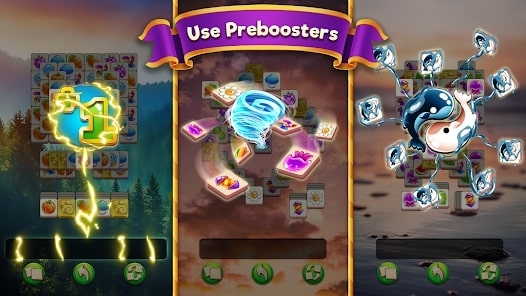
Conceptualization
An important step in the creation process for zen-match-like games is conceptualization. This stage is significant for laying the groundwork for the entire game by defining its core vision and thematic elements. During conceptualization, developers establish the overall theme and mood of the game, focusing on creating a calming and serene experience. This includes selecting visual styles, color schemes, and soundscapes that promote relaxation. Additionally, the core gameplay mechanics and objectives are defined to ensure they align with the soothing nature of the game. A detailed design document is often created during this phase, outlining the game’s vision, mechanics, and artistic direction. This document serves as a guide for the development team, ensuring that the final product delivers a cohesive experience that meets players’ expectations for tranquility and mindfulness.
Level Design
An important step in the creation process for zen-match-like games is level design. This phase is critical for ensuring that each level provides a balanced and engaging experience while maintaining the game’s soothing atmosphere. During level design, developers carefully craft each puzzle to ensure it is challenging yet accessible, aligning with the game’s goal of promoting relaxation. The design involves creating layouts that are visually pleasing and intuitively navigable, incorporating elements that blend seamlessly with the game’s aesthetic. Additionally, designers consider the pacing of difficulty, ensuring that players encounter a gradual increase in challenge without experiencing frustration.
Art and Animation
Art and animation play a very significant role in creating the tranquil experience that defines zen match-like games. These games rely on soothing visuals and fluid animations to establish a calming atmosphere, making them enjoyable to play and visually captivating. We’ll explore the intricate art and animation techniques that contribute to the serene appeal of zen match-like games, examining how these elements work together to enhance the overall player experience and support the game’s meditative qualities.

Asset Creation
An important step in the art process for zen match-like games is asset creation. This phase involves designing and producing the visual elements that will populate the game, such as tiles, backgrounds, and character animations. During asset creation, artists focus on crafting elements that align with the game’s minimalist aesthetic. Each asset is carefully designed to be visually pleasing and harmonious with the overall theme, often featuring soft colors and subtle details. The assets must also be optimized for smooth performance, ensuring that animations are fluid and responsive.
Animation
The creation and implementation of animations that enhance the game’s calming atmosphere are very important for zen match-like games. Animators focus on developing smooth and fluid movements that are both visually pleasing and aligned with the game’s tranquil theme. Each animation is designed to be subtle, avoiding overly complex or jarring motions that could disrupt the player’s sense of relaxation. Whether it’s the gentle rotation of tiles, the soft fade of elements, or the slow, deliberate movement of a character, these animations contribute to the overall serenity of the game.
Programming
Programming is at the heart of developing zen match-like games, where the goal is to create a smooth, intuitive, and calming gameplay experience. These games require precise coding to ensure seamless interactions, fluid animations, and responsive controls, all while maintaining the tranquil atmosphere that defines the genre. So, it’s very important to delve into the programming aspects of zen match-like games, exploring how developers use code to bring these peaceful puzzles to life, optimize performance, and enhance the overall player experience.
Core Mechanics
An important step in the programming of zen match-like games is developing the core mechanics. Key aspects include:
- Tile matching logic
Programmers create the underlying algorithms that detect and respond to player actions, such as matching tiles. This logic must be precise and responsive to ensure a smooth gameplay experience.
- User Interface (UI) interaction
The core mechanics also involve programming the UI elements, ensuring they are intuitive and responsive. This includes creating smooth transitions, animations, and feedback when players interact with the game.
- Game state management
Managing the game state — such as tracking progress, scoring, and level transitions — is important. Programmers design systems to handle these aspects efficiently, ensuring that the game runs smoothly and that players can easily pick up where they left off.
User Interface
We want to talk a little bit more about user interface (UI). This step involves creating a UI that is both functional and contributes to the game’s calming experience. Programmers work to ensure that the interface is intuitive, allowing players to navigate the game effortlessly. This includes designing smooth transitions between screens, responsive buttons, and clear, minimalist menus that don’t overwhelm the player. The UI is also optimized to be visually harmonious with the game’s overall aesthetic, using subtle animations and gentle color schemes that enhance the tranquil atmosphere. By carefully programming these elements, developers ensure that the UI enhances the player’s experience, making it both user-friendly and aligned with the zen-like nature of the game.
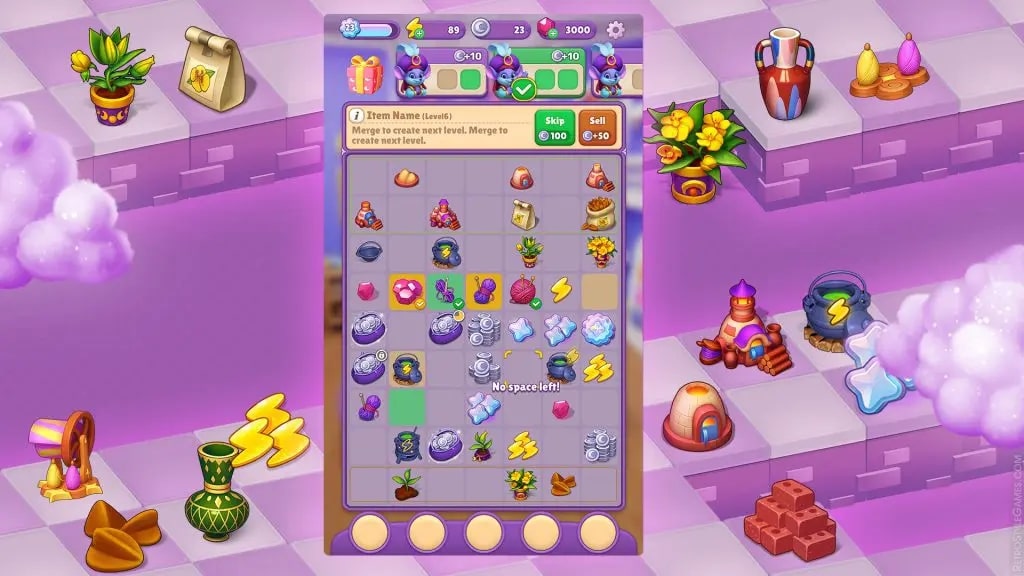
Testing and Iteration
Testing and iteration are critical processes in the development of zen match-like games, ensuring that the final product is both polished and enjoyable. Given the emphasis on a smooth and relaxing experience, these games require meticulous testing to identify and resolve any issues that could disrupt the player’s sense of calm. In return, iteration allows developers to refine gameplay mechanics, optimize performance, and enhance the overall user experience.
Playtesting
Playtesting involves having real players interact with the game to identify potential issues and gather feedback on the overall experience. It is important to ensure that the game’s mechanics, difficulty level, and user interface all contribute to the intended sense of calm and relaxation. Through playtesting, developers can observe how players engage with the game, noting any areas where frustration or confusion arises. This feedback is invaluable for making adjustments, such as tweaking the pacing of levels, refining controls, or enhancing visual and audio cues.
Polishing
Last but not least important step in the testing and iteration process for zen match-like games is polishing. This phase focuses on refining every aspect of the game to ensure it provides a flawless experience. Polishing involves fine-tuning the visuals, smoothing out animations, and optimizing performance to eliminate any distractions that could disrupt the player’s sense of tranquility. Developers also work on enhancing the user interface, ensuring that all elements are cohesive and aligned with the game’s calming aesthetic. Sound design is carefully adjusted to maintain a harmonious balance, and any minor bugs or inconsistencies are addressed. Through this meticulous polishing process, the game is brought to its final, polished state, offering players a seamless and satisfying experience.
Conclusion
In conclusion, zen match-like games offer a unique blend of calming gameplay and visually soothing experiences, designed to promote relaxation and mindfulness. Through meticulous attention to art and animation, programming, and thorough testing and iteration, developers create games that aren’t only engaging but also harmonious and stress-free. From conceptualizing serene visuals and intuitive mechanics to refining gameplay through playtesting and polishing, every step in the development process contributes to crafting a game that resonates with players seeking tranquility. As the genre continues to evolve, the dedication to creating a peaceful environment remains central to delivering a truly zen-like gaming experience.





